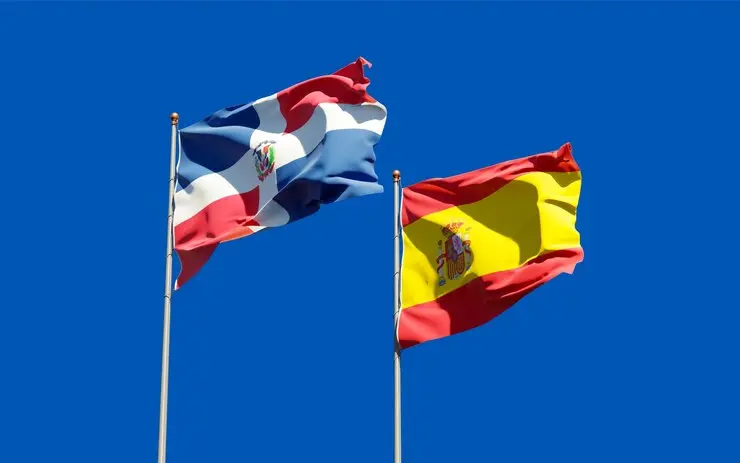It’s a small economy with big ambitions. The Dominican Republic went from being a low- to middle-income country faster than any of its Latin American peers and now wants to reach high income. To achieve this, the government is counting on investment to continue flowing at the current pace, but that alone does not solve the problems that have proven to be the most difficult, such as poverty and inequality. That will require more than promoting itself abroad as a country eager to do business.
For decades, the Caribbean country has grown well above the region’s average, with rates close to 5%. Last year was an exception, with a 2.4% increase in gross domestic product (GDP). The aggressive escalation of interest rates imposed by the central bank was effective in bringing down inflation. As a result, one of the most energetic sectors, namely the construction industry, which depends largely on financing, fell. Other sources of foreign exchange and income continued to rise: tourism generated 10,000 million dollars, remittances sent by nationals abroad registered another 10,000 million and exports totaled 14,000 million. Foreign direct investment reached a record $4.3 billion.
Economic Growth and Forecasts
These are big figures for such a small country. The Dominican Republic is the twelfth largest country in Latin America (measured by population), but it has climbed to become the ninth largest economy. According to an estimate by the International Monetary Fund, the country has shown the fastest convergence towards the highest average income in the last 50 years, above Panama and Chile.
The key has been investment, according to Minister of Economy, Planning and Development, Pavel Isa. Between 2019 and 2023, as a proportion of GDP investment went from about 24% to 30%, says the official. “That’s the kind of rate we could see with the explosive boom in Southeast Asian economies, and we’re seeing it in the Dominican Republic,” Isa says, referring to the historic growth of countries like Singapore.
In the Dominican Republic, this investment has been primarily private, with Spanish investment standing out. According to the central bank, Spanish companies invested in the construction and operation of 33,836 hotel rooms between 2022 and 2023. This figure far exceeds the national investment, which stood at 22,753 rooms in the same period. The USA was 7,837, Mexico 3,078 and Italy 1,961.
Photo: Pavel Isa, Minister of Economy, Planning and Development of the Dominican Republic, at the Annual Meeting of the Board of Governors of the Inter-American Development Bank, at the Barceló Bávaro Palace hotel, in Punta Cana, Dominican Republic, on March 8, 2024.CHELO CAMACHO
Historically burdened by inefficient electricity distribution companies dependent on hydrocarbons and coal, the government promotes the installation of renewable energy among entrepreneurs. In addition, this year, the Ministry of Finance is working on issuing a bond with environmental, social and governance (ESG) criteria to finance a water management project. The country reached its highest credit rating last year but has yet to achieve investment grade.
This year, the Dominican Republic made headlines globally when it announced that it would carry out a pilot program to reduce the working week to 4 days per week, something uncommon among countries with low productivity. “We want to experiment. The shorter working week is an experiment we’re testing to see if it helps increase productivity. It might not only be beneficial for the company, but also for the people.” says Isa.
The success story of Latin American countries like this one, which have grown at high rates for sustained periods has taken a turn. Intense protests in Chile, Peru and Panama, which have paralyzed the country for weeks, are seen abroad as a warning more or less to the effect that economic growth is not enough. A study by the Inter-American Development Bank (IDB), presented this week in Punta Cana on the sidelines of its Annual Meeting of Governors, shows that about 1% of the Dominican Republic’s wealthiest population controls about 42% of total wealth, levels comparable to El Salvador, Bolivia and the United States. In recent years, governments have come to understand that income inequality, poverty, and precariousness in the informal part of the economy are not solved simply by opening the door to private investment.
” We are glad monetary poverty has been reduced, but we still have a significant proportion of the population receiving insufficient income,” the official acknowledges. Under this administration, more than 20 increases in the minimum wage in the tourism sector have been decreed, as well as other increases in general salaries. “We have the mission, the determination to continue reducing the proportion of the population living in poverty, because it’s not just about income,” he says. Half of the economically active population operates in the informal sector, many of them in high precariousness.
“Despite the significant economic and social progress that the Dominican Republic is making, I believe the challenges remain considerable”, Isa concluded.
Source:




